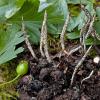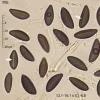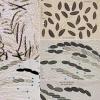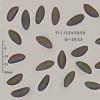
31-12-2025 19:27
Collected from loamy soil, at waterside (completel

30-12-2025 16:44
Pascal DucosBonjour,Une anamorphe rose stipitée, très nombre

30-12-2025 17:14
 Bernard CLESSE
Bernard CLESSE
Bonjour à toutes et tous,Pourriez-vous aider Albe

29-12-2025 10:15
Hulda Caroline HolteHello, I found and collected this propoloid ascom

30-12-2025 09:04
Hello.A Pyrenomycete sprouting sparsely but very d

29-12-2025 17:44
Isabelle CharissouBonjour,J'aimerais savoir si d'autres personnes au

12-11-2021 00:03
Lepista ZacariasHi everybody,A week ago in my fiels trip I noticed
Hi to everybody and specially Jacques Fournier
Today we have examined these gregarious stromata up to 40 mm high growing on buried seeds of Cornus sanguinea or Crataegus monogyna. We don't know what the host is because they are living together and the stromata were growing under both trees.
After reading wonderfull Fournier's keys we are observing that our ascospores are greater: 12-16 x 5-7 versus 11-13 x 4.6-5.9 sec. Jacques. Also we have seen that collections on Cornus seeds can be greater. The question is: There is some innovation on this matter?
Many thanks in advance

your observations are very interesting and strongly suggest that the Xylaria on Cornus fruits has larger ascospores than the one on Crataegus, as previously observed on the material collected by Peter Welt. I hope that will be sorted out on molecular grounds but it can be expected these fruit-inhabiting species are phylogenetically very closely related (see also X. delitschii). I have no new information so far.
Saludos,
Jacques
HI Jacques
Welcome from the Antillas. I wish that you have found nice fungi.
Well, we will analyze both collections and I will keep you informed.
Thanks a lot, jacques






